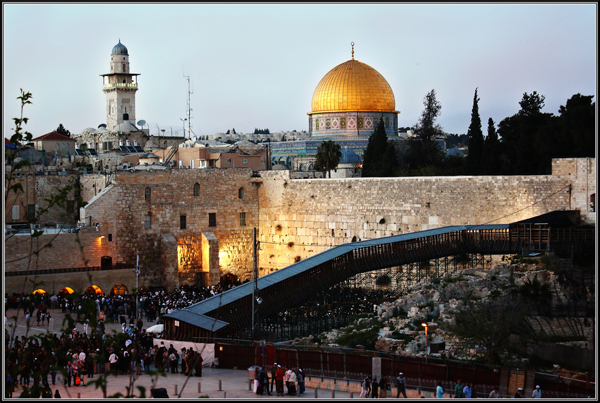
A Jewish history scholar believes he has decoded the eight letters thought to be the most ancient Hebrew inscription to come out of Jerusalem.
Gershon Galil, a Jewish history professor at the University of Haifa, says the letters appear on a wine jug and the inscription tells what type of wine it contained: cheap wine for slaves.
"This wine was not served on the table of King Solomon nor in the Temple," Galil wrote in the journal New Studies on Jerusalem. "Rather it was probably used by the many forced laborers in the building projects and the soldiers that guarded them."
He notes this proves the biblical account of Jerusalem as a sophisticated and powerful city, which some scholars have denied.
"The ability to write and store the wine in a large vessel designated for this purpose, while noting the type of wine, the date it was received, and the place it was sent from, attests to the existence of an organized administration that collected taxes, recruited laborers, brought them to Jerusalem, and took care to give them food and water," he wrote.
Scholars believe the jug dates back to the reign of King Solomon more than 3,000 years ago, but the engraving's meaning has eluded archaeologists since its discovery last summer. At the time, the lead archaeologist on the dig that found the engraving, Eliat Mazar, said the combination of letters did not match any known west-Semitic language.
Initially, Mazar and others believed the inscription was made a non-Israeli, likely a Jebusite - a group of non-Jews who also lived in Jerusalem.
Galil, however, believes the inscription is in an early form of Hebrew - and one written right to left rather than left to right as Hebrew has traditionally been written. Attempts to read it left to right have not yielded any results.
The jug was found in the Ophel area of Jerusalem, south of the Temple Mount. Galil believes the inscription was made in the years after Solomon had built the temple and his palaces as described in 1 Kings 6-8 and again in 2 Chronicles 3-5. Incidentally, he says it was these very building projects that produced such a high demand for cheap wine and its storage.
Eliat Mazat, a third-generation archaeologist, has been excavating King Solomon's complex off and on since 2009. The wine jug was found in a dig that began in 2012. Other notable discoveries from the dig include artifacts described by the prophet Jeremiah.
Mazat is no stranger to biblical discoveries. In the 1990s, she used clues from the Bible in an attempt to find the ruins of King David's palace. In 2005 she announced she had, though not all scholars agree. Yet, in a 2008 interview, she said she remains committed to her biblically based work.
"[The Bible] is the historical source, so important, so fantastically written," she said. "The question is, how much of the reality that the Bible describes can we archeologists reveal?"

















